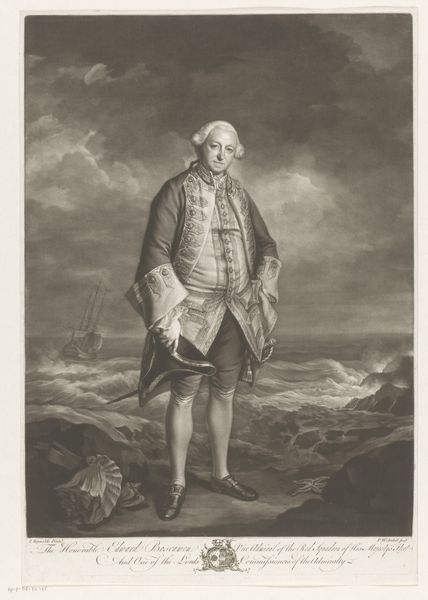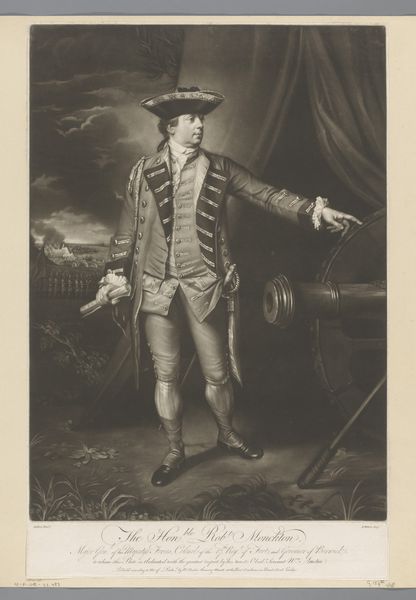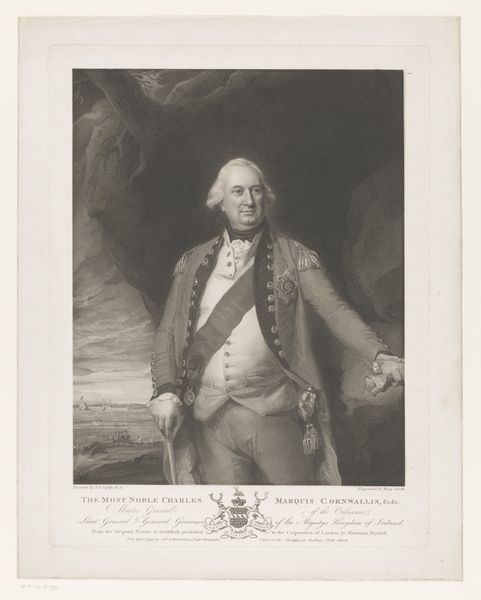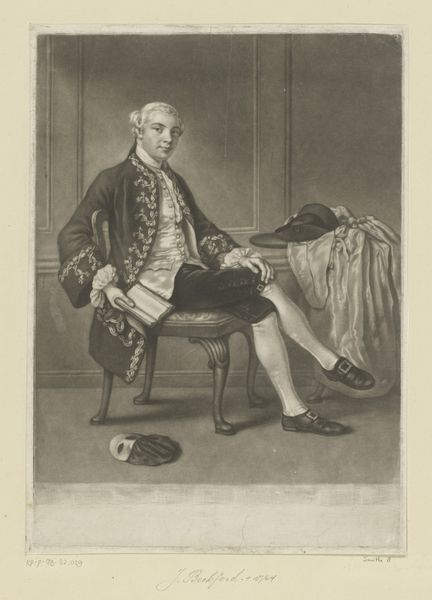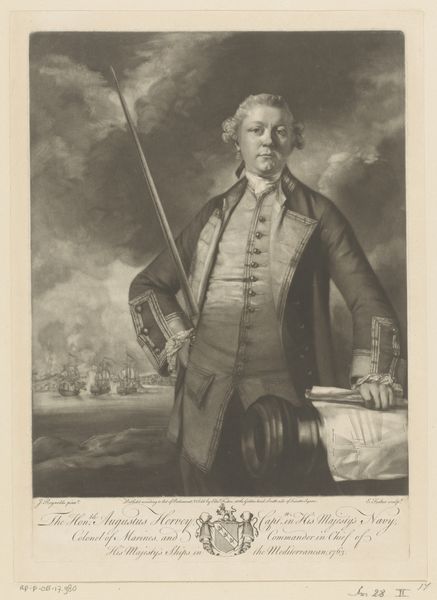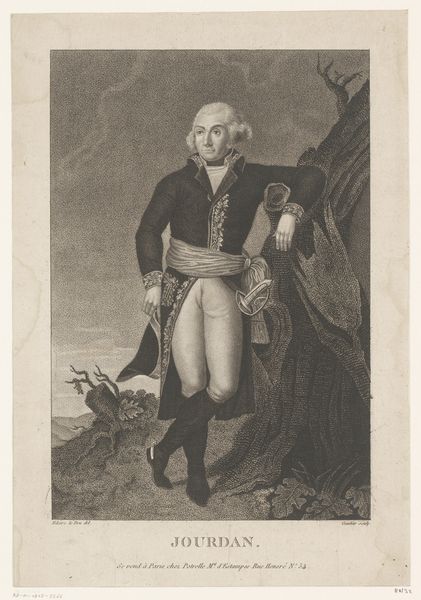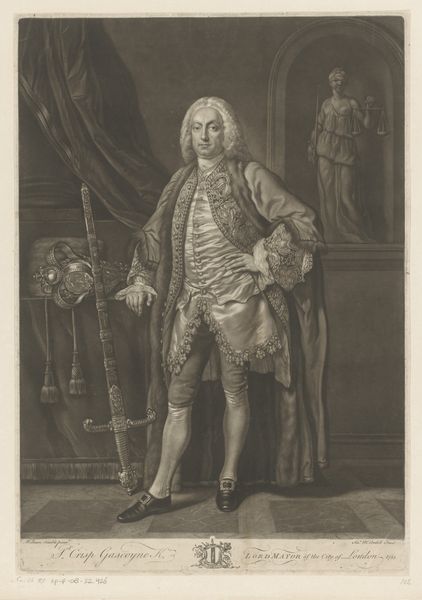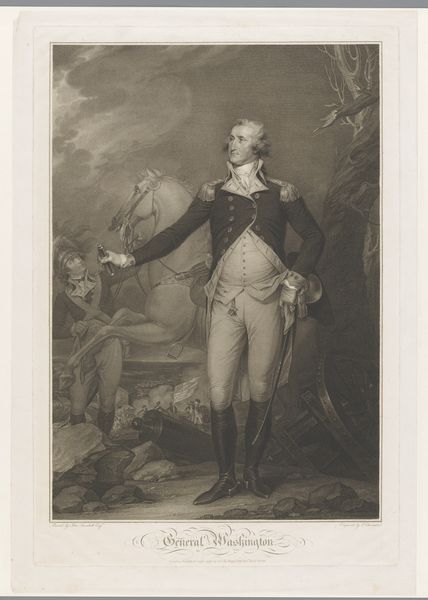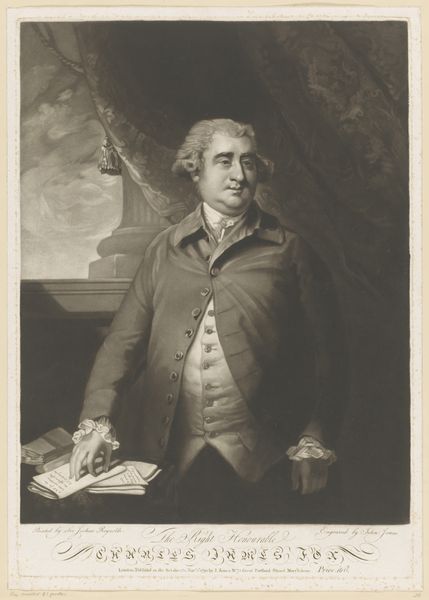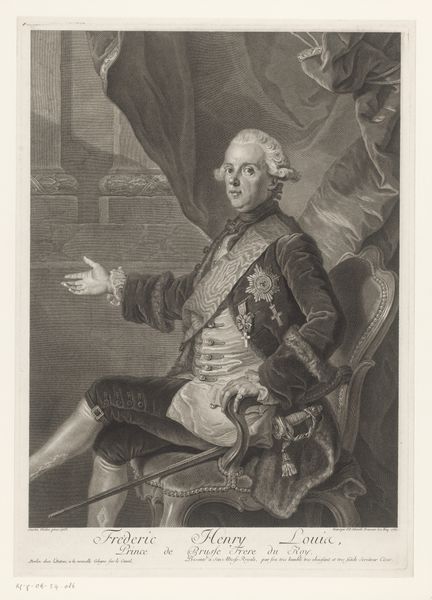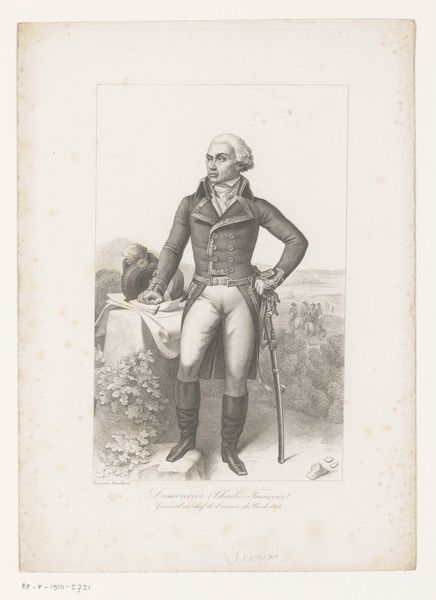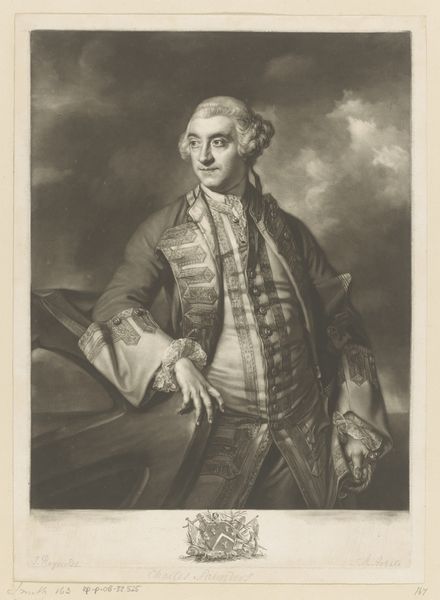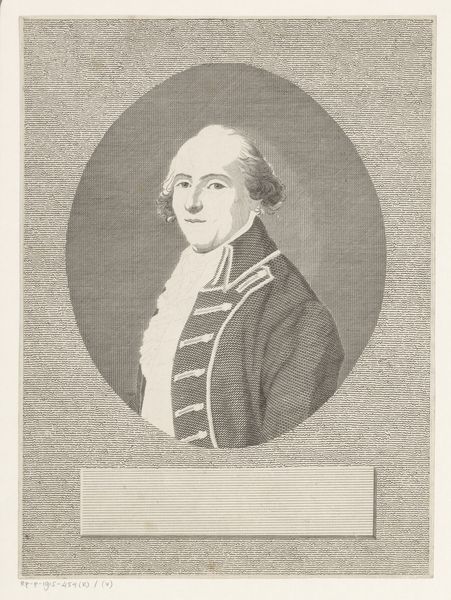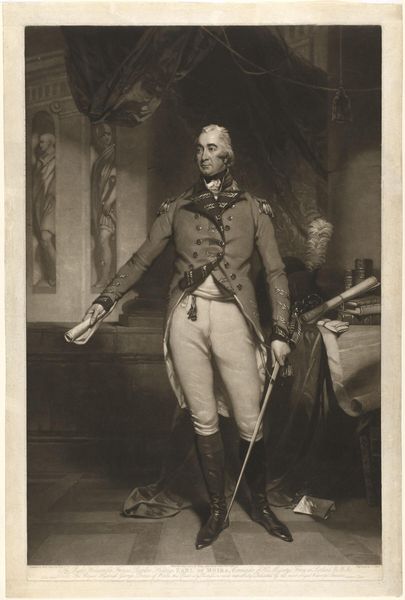
print, engraving
#
portrait
#
neoclacissism
# print
#
history-painting
#
engraving
Dimensions: height 658 mm, width 455 mm
Copyright: Rijks Museum: Open Domain
Curator: This is "Portrait of Adam Duncan," an engraving created in 1798 by James Ward. Editor: It strikes me as imposing, and somewhat romantic. The monochrome tones emphasize the rough seas behind him, contrasting the detail of the sitter’s dress. Curator: Absolutely. Ward created this print based on an earlier portrait to disseminate Duncan’s image widely, particularly after his victory at the Battle of Camperdown. Consider the role of printmaking in creating public heroes. Editor: I’m curious about the actual engraving process, since prints allowed for a new sort of consumption of images, but would this have also changed how artisans worked in this period? I mean, engraving plates takes a certain kind of specialist labor, doesn't it? Curator: Yes, specialized labor in this period led to a greater understanding of images being more and more a sort of common thing – less sacred or unique. This print would have been relatively affordable, thus it could be enjoyed by a broad section of society, thus shaping popular sentiment regarding naval power and Duncan himself. The mass production is directly tied to how accessible imagery was becoming. Editor: The print’s mass availability, almost a type of propaganda, played a role in shaping Duncan's legacy. Consider how social and political conditions shape not only what art is made but how it's distributed and received. Do you agree it’s like early social media influencing culture at scale? Curator: In a way, that's right, but unlike algorithms today that tend to change taste more organically, prints offered up concrete political messages. In contrast to painted portraits for the elite, prints became potent political tools shaping British identity during a time of naval dominance. I still think of all that specialist labor required to engrave those lines. The print is not just about image, it's also about manufacturing objects, its a type of industry as much as artistic creation. Editor: This makes one appreciate not only the artistry and production, but also consider the mechanisms through which celebrity and hero worship were cultivated in that era. What a lot to take from a printed portrait.
Comments
No comments
Be the first to comment and join the conversation on the ultimate creative platform.
